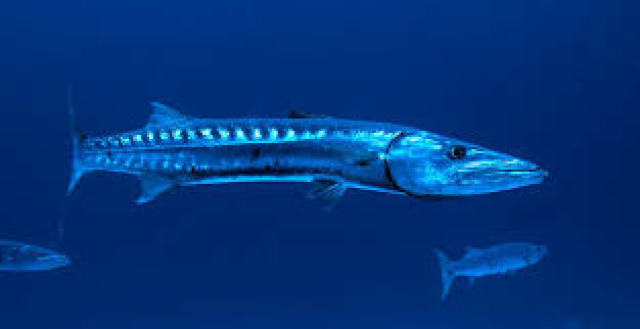A barracuda is a large, predatory ray-finned fish known for its fearsome appearance and ferocious behaviour. The barracuda is a saltwater fish of the genus Sphyraena, the only genus in the family Sphyraenidae which was named by Constantine Samuel Rafinesque in 1815. It is found in tropical and subtropical oceans worldwide ranging from the eastern border of the Atlantic Ocean to the Red Sea, on its western border the Caribbean Sea, and in tropical areas of the Pacific Ocean. Barracudas reside near the top of the water and near coral reefs and sea grasses. Barracudas are targeted by sport-fishing enthusiasts.
Barracudas are snake-like in appearance, with prominent, sharp-edged, fang-like teeth, much like piranha, all of different sizes, set in sockets of their large jaws. They have large, pointed heads with an underbite in many species. Their gill covers have no spines and are covered with small scales. Their two dorsal fins are widely separated, with the anterior fin having five spines, and the posterior fin having one spine and 9 soft rays. The posterior dorsal fin is similar in size to the anal fin and is situated above it. The lateral line is prominent and extends straight from head to tail. The spinous dorsal fin is placed above the pelvic fins and is normally retracted in a groove. The caudal fin is moderately forked with its posterior edged double-curved and is set at the end of a stout peduncle. The pectoral fins are placed low on the sides. Its swim bladder is large. Speedy and dynamic, they are slim, with small scales. Barracudas also have two well-separated dorsal fins, a protruding lower jaw, and a large mouth with many large, sharp teeth.
In most cases, a barracuda is dark gray, dark green, white, or blue on its upper body, with silvery sides and a chalky-white belly. Coloration varies somewhat between species. For some species, irregular and unorganized black spots or a row of darker cross-bars occur on each side. Their fins may be yellowish or dusky. Barracudas live primarily in oceans, but certain species, such as the great barracuda, live in brackish water.

